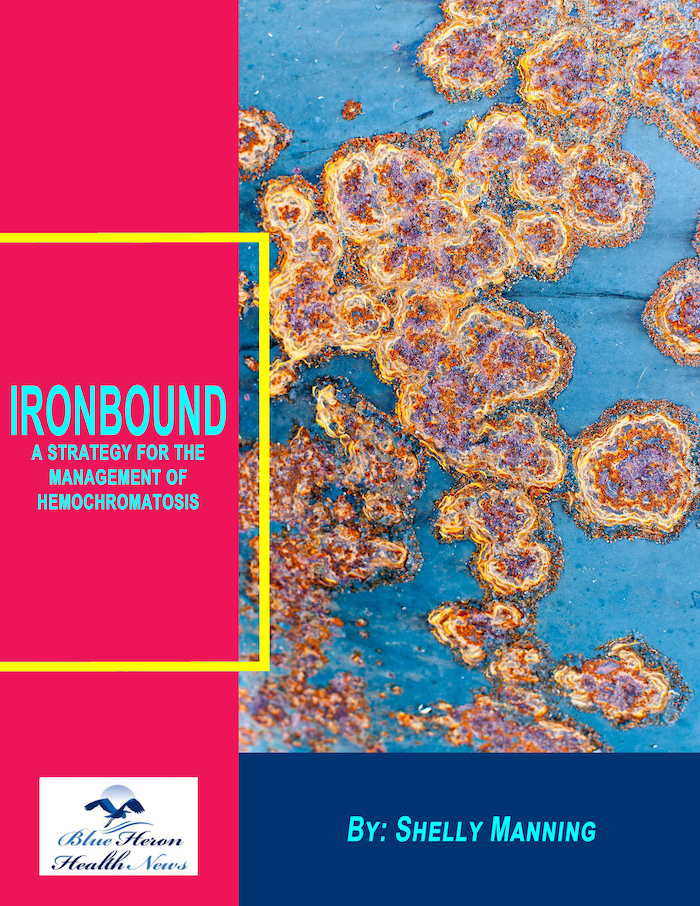
Ironbound™ A Strategy For The Management Of Hemochromatosis by Shelly Manning if you are suffering from the problems caused by the health condition of HCT due to excess amount of iron in your body then instead of using harmful chemical-based drugs and medications you are recommended to follow the program offered in Ironbound Shelly Manning, an eBook. In this eBook, she has discussed 5 superfoods and other methods to help you in reducing the level of iron in your body in a natural manner. Many people are benefited from this program after following it consistently.
How often should iron levels be monitored in hemochromatosis patients?
The frequency of iron level monitoring in patients with hemochromatosis depends on several factors, including whether the patient is undergoing treatment (such as phlebotomy or iron chelation therapy), the severity of iron overload, and any complications or organ damage associated with the condition. Here’s a general guideline for monitoring iron levels in hemochromatosis patients:
1. During Active Treatment (Phlebotomy or Iron Chelation):
- Phlebotomy:
Phlebotomy (regular blood removal) is the primary treatment for reducing iron levels in hereditary hemochromatosis. Iron levels are monitored frequently during the initial phase of treatment to assess how effectively phlebotomy is reducing iron stores.- Serum Ferritin: Serum ferritin is the most commonly used marker for monitoring iron levels. During the first phase of treatment, ferritin levels are typically checked every 1-3 months to track progress.
- Transferrin Saturation: Transferrin saturation may also be checked periodically, usually every 3-6 months, to assess how much iron is circulating in the blood.
- Once Ferritin Levels Normalize:
After reaching the target ferritin level (typically around 50-100 ng/mL), monitoring can be spaced out to every 3-6 months, depending on the individual’s response and risk of iron overload recurrence. - Long-Term Maintenance:
Once iron levels are stable, most patients with hemochromatosis require ongoing monitoring. Ferritin and transferrin saturation are typically checked every 6-12 months to ensure that iron levels remain within the target range and prevent iron reaccumulation.
2. For Patients Not Undergoing Active Treatment:
- Diagnosis and Initial Monitoring:
For patients who have been diagnosed with hemochromatosis but are not yet undergoing treatment, iron levels should be checked more frequently to determine the extent of iron overload. Typically, this might involve checking ferritin and transferrin saturation every 3-6 months until a treatment plan is established. - After Diagnosis:
Once a treatment plan is in place, the frequency of monitoring can depend on the severity of the iron overload and whether the patient requires therapeutic phlebotomy or iron chelation therapy.
3. After Liver or Organ Damage:
- If a patient with hemochromatosis develops complications like liver damage, cirrhosis, or heart disease due to iron overload, more frequent monitoring of iron levels may be necessary to ensure that treatment is effectively reducing iron stores and preventing further organ damage.
- In these cases, iron studies (ferritin and transferrin saturation) may be checked more often, potentially every 1-3 months until the situation stabilizes.
4. During Pregnancy:
- Women with hemochromatosis who are pregnant or planning to become pregnant should have their iron levels closely monitored, as pregnancy can affect iron metabolism. Monitoring of ferritin and transferrin saturation is generally recommended every 1-2 months during pregnancy, depending on the individual’s iron levels and treatment regimen.
5. For Patients with Comorbidities:
- If a patient with hemochromatosis also has other conditions such as diabetes, cardiovascular disease, or liver cirrhosis, more frequent iron level monitoring may be necessary to prevent further complications. In such cases, regular follow-ups with both blood tests and imaging studies may be required to track organ function.
Summary:
- Active treatment phase: Ferritin and transferrin saturation are monitored every 1-3 months initially.
- Maintenance phase: Once iron levels are controlled, monitoring is generally done every 3-6 months.
- Without active treatment: Iron levels should be checked every 3-6 months until a treatment plan is implemented.
- With complications: More frequent monitoring, potentially every 1-3 months, is needed in cases of organ damage or comorbidities.
Regular monitoring of iron levels is crucial in managing hemochromatosis effectively to prevent complications such as liver disease, heart disease, and diabetes. The exact frequency should always be tailored to the individual patient’s condition and treatment plan, in consultation with their healthcare provider.
Ironbound™ A Strategy For The Management Of Hemochromatosis by Shelly Manning if you are suffering from the problems caused by the health condition of HCT due to excess amount of iron in your body then instead of using harmful chemical-based drugs and medications you are recommended to follow the program offered in Ironbound Shelly Manning, an eBook. In this eBook, she has discussed 5 superfoods and other methods to help you in reducing the level of iron in your body in a natural manner. Many people are benefited from this program after following it consistently